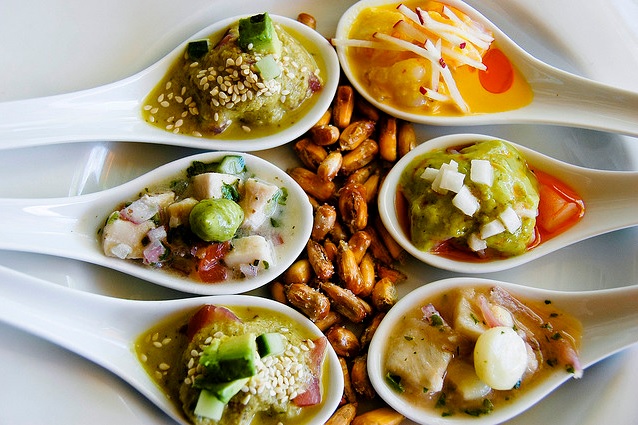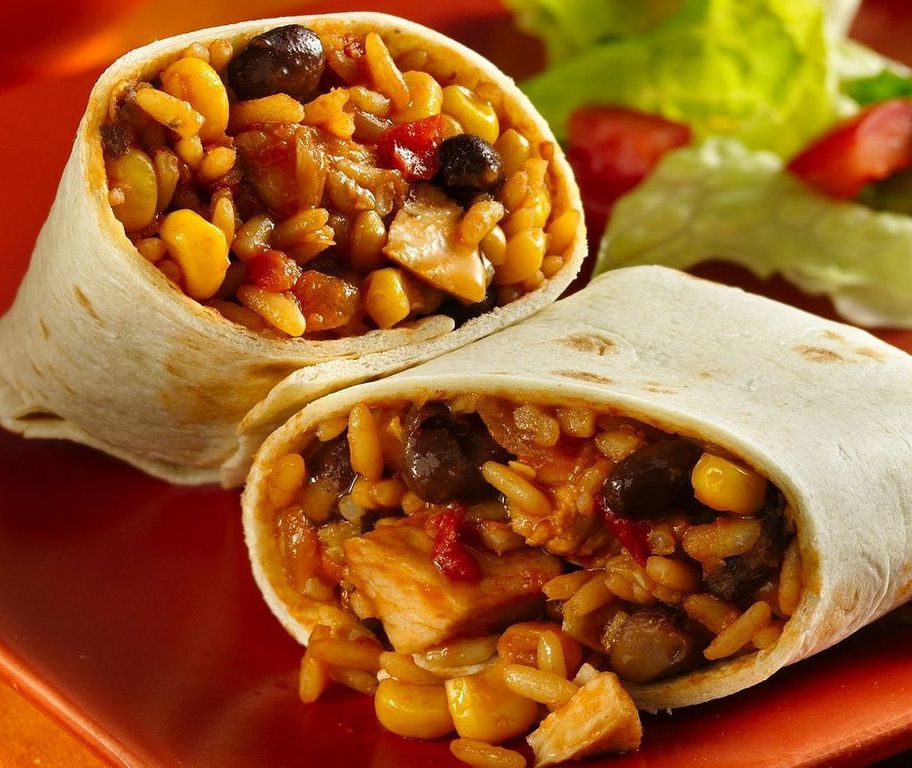Tortillas, tamales, tacos, fajitas, quesadillas, guacamole, pico de gallo, chimichurri, and some flaming chilli pepper--when you bite into a Latin American dish, you know you're in for a fiesta of fun, delicious flavors. Most Latin American countries fabricate and drink beer, making the latter the perfect option for a perfectly balanced dining experience. However, don't entirely rule out a Gewurztraminer from Uruguay when it comes to finding the ideal match for your fresh guacamole. Served chilled, this white will enhance the richness of the avocado. If you're in the mood for a simple dish like grilled vegetables and chicken with chimichurri sauce, opt for a very light and fresh white wine.
Nothing embodies Latin American cuisine quite like an authentic taco. Tacos generally have a wonderful clash of flavors, so they can be difficult to pair with wine. Let's use the beef taco as an example. In this dish you'll find cheese, peppers, onions, guacamole and sour cream; however, the spicy salsa definitely dominates. You'll want to go with a light red, such as a Pinot Noir, Barbera d'Asti or Beaujolais. Keep in mind that Latin American cuisine is definitely spicy, so you'll want to select light reds and whites in almost any case.

Photo : Brenda Benoît
Seafood ceviche - You can find a similar dish at Madre.
Domaine Gerovassiliou, $19.80 - Refreshing with spicy, floral and fruity aromas. Nice acidity and some minerality.
Les Deux Clochers, $14.70 - Very light red with fresh acidity, soft tannins and floral/fruity aromas. Best served slightly chilled.
Mexican

Photo : Betty Crocker Recipes
Chicken Burrito - You can find a similar dish at El Amigo.
Rapitala Catarratto/Chardonnay, $13.75 - Dry with low acidity and fruity aromas.
Donnadieu Cuvée Mathieu et Marie, $17.80 - Dry with intense spicy and fruit aromas. Firm but pleasant tannins.
GLOSSARY
Aroma: Commonly used to describe the smell of a relatively young, unevolved wine. Ex: spicy, floral, fruit etc.
Floral: Red and white wines can have floral aromas.
Dry: Red or white wines that lost all residual sugar during fermentation. Somewhat subjective to what tasters perceive as sweet.
Fresh: Freshness is a good quality; it comes with acidity.
Balance: One of the most desired traits in a wine. When then concentration of fruit, level of tannins and acidity are in complete harmony.
Light: Red and white wines that contain minimal alcohol. Such a wine will also feel light in your mouth.
Bold: Having richness and intensity of flavor or aroma.
Acidity: All wines naturally contain acids, but they should always be in harmony with the fruit and other components. Sufficient acidity gives liveliness and crispness, and can preserve a wine's freshness.
Spicy: A wine with aromas reminiscent of spices such as clove, mint, cinnamon, or pepper.
Soft: Delicate wines with gentle fruit. They can also be low in acidity.
Vegetal: Red or white wines with a subtle vegetable garden smell.
Woody: Red or white wines with excessive aromas of wood. Common to wines aged overlong in cask or barrel. Opposite of unwooded.
Minerality: Wine's buzzword. It would be best described as the meeting point between dry and wet. Mineral wines generally have a slightly salty character and flavors of slate or wet stone. This aroma or flavor comes from grapes grown in intense, rocky, mineral-laden soils.
Velvety: Smooth and rich in texture.
Crisp: A wine giving the impression of freshness, usually with high acidity.
Lively: A wine giving the impression of freshness and vitality.
Fruity: Descriptive of unevolved, light wines in which the fruit is dominant. Refers to the aroma and/or flavor of the grape, as well as other fruits flavors, such as apple, blackcurrant, cherry, pear, citrus fruits, peach raspberry or strawberry.
Buttery: Richness and smoothness of a wine, somewhat akin to the oiliness and flavor of butter.
Jammy: Wines with great intensity of fruit from excellent ripeness. Very concentrated, flavorful wine.
Rich: Full flavor, body and aroma.
Sweet: Both red and white wines can be considered sweet. Indicates the presence of residual sugar, retained when the grape is not completely converted into alcohol.
Tannins: In a nutshell, tannins are what leave your mouth feeling dry once you've tasted an unevolved red wine. They come from the skin, the seeds and the stalks of grapes. They can also stem from the maturing process in oak barrels. Why don't white wines normally contain tannins, you ask? Well, the juice is left to macerate with the skin and seeds of the grapes, the parts that contain the tannins. This is not the case for white wines. Good tannins bring structure and balance, and are essential to red wines. They are also particularly important in the conservation of wine.
Leave a comment